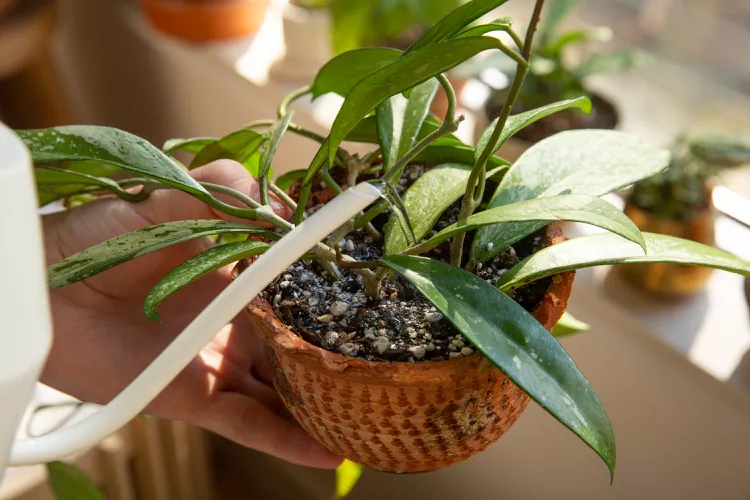Plant misters or spritzers are everywhere: The prettiest ones look like little antique perfume bottles (though more utilitarian options are also available, and popular), but they’re designed to make your plants happy by spraying a light mist of water over your plants’ leaves with every pump of the bottle trigger.
The pretty aesthetic of misting houseplants has taken over TikTok and Instagram. But is the misting method just as good as watering with a traditional watering can? Or could this craze actually be harming your plants? Here’s what the experts have to say about spritzing or misting your plants.
- Sara Bendrick is a licensed landscape contractor and STIHL spokesperson.
- Amy Hovis is the principal of Eden Garden Design and owner of Barton Springs Nursery, a design-driven garden center in Austin, Texas, that specializes in native plants.
Is Misting Just as Good as Watering Your Plants?
Sorry to be the bearer of bad news, but spritzing or misting just doesn’t hydrate plants the way traditional watering does. Licensed landscape contractor Sara Bendrick has a good analogy for it.
“It is like throwing fresh water on your face after a long day versus just drinking water,” she says. “One action cleans and absorbs—keeping everything feeling clean and moist. While the other is ingested, hydrating from the inside out.”
Amy Hovis of Eden Garden Design and Barton Springs Nursery says just spritzing or misting just doesn’t cut it. “Spritzing your plants is not the correct way to water your plants. In fact, it doesn't water them at all,” she says.
While spritzing can provide some moisture, unless the plant really thrives in humidity (ferns, orchids, or bromeliads, for example), Hovis says spritzing can do more harm than good.
“What [plants] really need is a good soak,” she says. “Their roots are where they will drink up the water, so the best way to water is to avoid watering the top of the plant, and water straight to its root ball. A thorough soaking, allowing the water to flow through and out the bottom of their pot, is what your plants need to be healthy and hydrated.”
If you are growing plants outside, she suggests using a drip irrigation system.
“A drip irrigation system is buried underground with emitters positioned at the root ball of each plant,” Hovis says. “The system disperses water directly to the roots of the plant rather than spraying from above. This is not only more efficient, but much better for the plants.”
Is It Ever OK to Mist Your Plants?
Under some circumstances, there are exceptions to the watering-is-better rule, depending on the environment and type of plant being grown.
“Spritzing and watering are not the same, and not every plant needs or wants to be spritzed,” Bendrick says. “For example, tropical house plants from humid environments might appreciate some spritzing, but some house plants that don’t hail from tropical origins might hate it and, therefore, spritzing might have a negative effect on your plant.”
If you live someplace without too much humidity, you blast the air conditioner all day long, or you have other household items affecting the humidity in your home, Bendrick advises giving your houseplants a good misting.
“In nature, plants will naturally gather humidity from the air, creating dew drops which will freshen the plant leaves and remove dust,” she says. “This ultimately creates a better exchange of oxygen and moisture. Misting one to two times per week can refresh your plants and keep them happy and thriving.”
So it’s OK to keep that pretty misting bottle near your plants—just don’t let that be the only water they get.




















